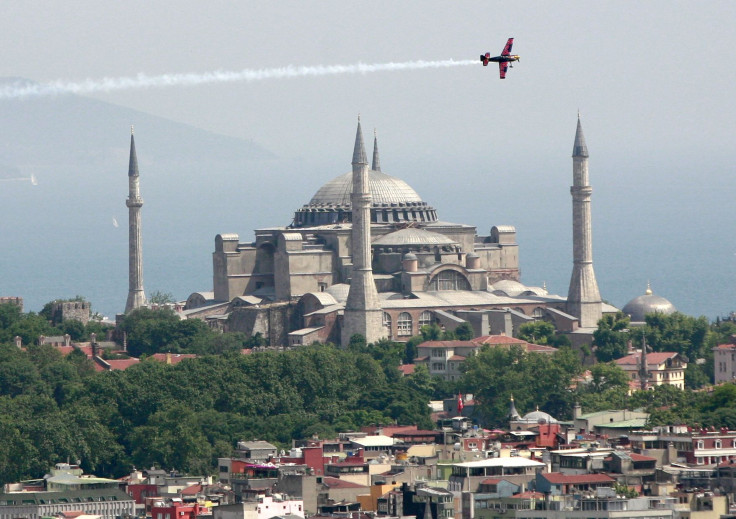Hagia Sophia Mosque Conversion Update: Historic Christian Church For Muslim Worship To Be Restored

A restoration effort will be performed at the Hagia Sofia Mosque in the Black Sea province of Trabzon in northeastern Turkey, the Hurriyet Daily News reported Thursday.
The mosque reopened its door to Muslim worshippers in 2014 after having been a museum for 52 years. The project is expected to take up to two years to complete but is scheduled to open for Islamic prayer services during construction sometime this year.
The Hagia Sofia Mosque, which was originally built between 1238 and 1263 as a medieval church, was renamed the Trabzon Center Mosque in 2014 when it was converted from a museum. The restoration process is estimated to cost just over $500,000 and will feature an electric shielding system placed in front of the Byzantine-era Christian paintings and frescoes adorning some of its walls. Restoration plans also include creating a walking path made of natural stones surrounding the mosque.
Hagia Sofia, Trabzon pic.twitter.com/kwo7obxMVP
— Wild Geese (@WildGooseSail) February 10, 2014
İsmet Çalık, the provincial director of historical sites in Trabzon, told reporters that the electronic shields would be clear but able to be darkened at the press of a button so that Muslim worshipers wouldn’t see the paintings while engaging in religious services at the mosque.
“When we push the button, all mural paintings will become opaque … Thus, people will be able to worship without any influence from paintings,” Çalık said.
Trabzon's Hagia Sofia: How Converting Church to Mosque Hurts Both Religionshttp://t.co/cXItnvCbX8
— Michael J. Crosbie (@_MJCrosbie_) July 25, 2013
The former Hagia Sofia church was constructed by the Byzantine Empower Manuel I Komnenos, a Christian crusader, during his reign over regions including Northern Turkey between 1238 and 1263. When it was turned into a mosque following the Ottoman sultan Mehmed II conquering Trabzon in 1461, the frescos on the southern part of the building were whitewashed due to the Islamic ideology of not portraying religious iconography. Consequently, Çalık said the southern part of the mosque would be open to Muslim worshipers while the frescoes that can still be seen on the northern walls of the building would be covered by the opaque electronic tape.
The Hagia Sofia Mosque is a renowned example of late Byzantine architecture, according to the Daily Sabah.
Like a lot of the examples of churches that were converted into mosques in southern Spain, the former Hagia Sofia church is particularly known for its non-Muslim architectural aesthetics such as its tall central dome which is held up by four large columns. Mosques often feature mihrabs, or marks on a wall, that point worshippers in the direction of the holy city of Mecca, Saudi Arabia. The mihrabs typically feature three columns, an allusion to the fabled entrance to paradise in the Quran.
© Copyright IBTimes 2024. All rights reserved.





















